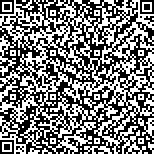|
|
|
| |
|
|
| 本文已被:浏览 1274次 下载 763次 |

码上扫一扫! |
|
|
| 基于网络分析的《千金方》脏腑辨证配穴规律研究 |
|
樊晓靖1, 石锦2, 杨栋婷3, 卞也4, 王立存1
|
|
1.天津中医药大学第二附属医院针灸脑病中心, 天津 300250;2.脉景(杭州)健康管理有限公司, 杭州 311121;3.天津市滨海新区中医医院, 天津 300450;4.天津市机电工艺学院, 天津 300350
|
|
| 摘要: |
| [目的] 基于网络分析方法对《千金方》中所辑录的包含两个穴位及两个以上的针灸处方进行分析研究,总结《千金方》脏腑辨证的针灸选穴配穴规律。[方法] 1)搜集整理《千金方》中包含两穴以上的多穴处方条文以及《脏腑虚实标本用药式》中所辑录的各脏腑所属本病及标病,分别建立肺-大肠、心-小肠、胃-脾、肝-胆以及肾-膀胱病证的穴位处方数据库。2)应用网络分析与可视化软件Cytoscape对穴位处方进行网络分析,总结《千金方》中的穴位配伍规律。[结果] 1)《千金方》中治疗肺-大肠病症的高频腧穴为太溪、天突、章门、肺俞、巨阙,治疗心-小肠病症的高频腧穴为间使、巨阙、水沟、曲泉、大陵;治疗脾-胃病症的高频腧穴为章门、中脘、巨阙、厉兑、内庭、足三里;治疗肝-胆病症的高频腧穴为昆仑、肝俞、前谷;治疗肾-膀胱的高频腧穴为关元、复溜、涌泉、承筋、大墩。取穴频率最高的经脉为足太阳膀胱经,特定穴中使用频率最高的是五输穴和募穴。2)《千金方》治疗肺-大肠病症的核心穴位处方为太溪、中脘、厉兑、天容、尺泽、肺俞、章门、天突、云门、风门、然谷;治疗心-小肠病症的核心穴位处方为肝俞、阳陵泉、曲泉、支沟、百会、间使、心俞、合谷、肾俞、风池;治疗脾-胃病症的核心穴位处方为本神、昆仑、天柱、间使、曲池、支沟、肝俞、合谷、章门、肾俞;肝-胆病症的核心穴位处方是阳陵泉、百会、昆仑、天柱、肾俞、中渚、曲泉、通谷、侠溪、上关;肾-膀胱病症的核心穴位处方为复溜、太白、大墩、然谷、关元、太溪、涌泉、行间、承筋、阴陵泉。[结论] 1)《千金方》在脏腑辨证指导下的选穴以膀胱经腧穴和特定穴为主。2)首次将网络针灸学分析方法用于经典医著《千金方》穴位处方的信息挖掘,为针灸处方选穴及其配穴规律研究提供一种新的技术手段,也为《千金方》配穴经验临床推广应用提供依据。 |
| 关键词: 千金方 网络分析 配穴规律 脏腑辨证 |
| DOI:10.11656/j.issn.1672-1519.2021.03.14 |
| 分类号:R241.6 |
| 基金项目:天津市卫生和计划生育委员会中医中西医结合科研课题项目(2017150)。 |
|
| Research on the rules of matching acupoints of zangfu syndrome differentiation in Qianjinfang based on network analysis |
|
FAN Xiaojing1, SHI Jin2, YANG Dongting3, BIAN Ye4, WANG Licun1
|
|
1.Acupuncture Encephalopathy Center, Second Affiliated Hospital of Tianjin University of Traditional Chinese Medicine, Tianjin 300250, China;2.Maijing(Hangzhou) Health Management Co., Ltd, Hangzhou 311121, China;3.Tianjin Binhai New Area Hospital of Traditional Chinese Medicine, Tianjin 300450, China;4.Tianjin Institute of Mechanical and Electrical Technology, Tianjin 300350, China
|
| Abstract: |
| [Objective] Based on the method of network analysis, the acupuncture prescriptions containing two points or more acupoints compiled in Qianjinfang were collected and analyzed, and the rules of acupuncture point selection and distribution based on zangfu syndrome differentiation in Qianjinfang were summarized.[Methods] 1) Collect and sort out the multi-acupoint prescriptions containing more than two points in Qianjinfang and different diseases of each viscera recorded in Zangfu Biaoben Xushi Medication Modes, then establish acupoint prescription database of the lung-large intestine, heart-small intestine, spleen-stomach, liver-biliary, kidney-bladder diseases respectively. 2) The network analysis and visualization software Cytoscape is used to analyze the acupoint prescription, and the rule of acupoint compatibility in Qianjinfang is summarized.[Results] 1) The high-frequently used acupoints in the treatment of lung-large intestine diseases in Qianjinfang are Taixi (KI3), Tiantu (CV22), Zhangmen (LR13), Feishu (BL13), and Juque (RN14). The high-frequently used acupoints for treating heart-small intestines diseases are Jianshi (PC5), Shuigou (DU26), Juque (RN14), Daling (PC7). The high-frequently used acupoints for the treatment of stomach-spleen diseases are Zhangmen (LR13), Zhongwan (RN12), Juque (RN14), Lidui (ST45), Neiting (ST44) and Zusanli (ST36). The high-frequently uesd acupoints for treating liver-biliary diseases are Kunlun (BL60) and Ganshu (BL18), Qiangu (SI2). The high-frequently used acupoints for the treatment of kidney-bladder diseases are Guanyuan (RN4), Fuliu (KI7), Yongquan (KI1), Chengjin (BL56) and Dadun (LR1). The meridian with the highest frequency of usage of acupoints is the bladder meridian. The specific acupoints with the highest frequency of usage is five shu point and front-mu point. 2) The core points in the treatment of lung-large intestine diseases in Qianjinfang are Taixi (KI3), Zhongwan (RN12), Lidui (ST45), Tianrong (SI17), Chize (LU5), Feishu (BL13), Zhangmen (LR13), Tiantu (RN22), Yunmen (LU2), Fengmen (BL12), Rangu (KI2). The core points in the treatment of heart-small intestine diseases are Fanshu (BL18), Yanglingquan (GB34), Ququan (LR8), Zhigou (SJ6), Baihui (DU20), Jianshi (PC5), Xinshu (BL15), Hegu (LI4), Shenshu (BL23), Fengchi (GB20). The core points in treatment of stomach-spleen diseases are Benshen (BG132), Kunlun (BL60), Tianzhu (BL10), Jianshi (PC5), Quchi (LI11), Zhigou (SJ6), Ganshu (BL18), Hegu (LI4), Zhangmen (LR13), Shenshu (BL23). The core points in treatment of liver-biliary diseases are Yanglingquan (GB34), Baihui (DU20), Kunlun (BL60), Tianzhu (BL10), Shenshu (BL23), Zhongzhu (SJ3), Ququan (LR8), Tonggu (BL66), Xiaxi (GB43), Shangguan (GB3). The core points in treatment of of kidney-bladder diseases are Fuliu (KI7), Taibai (SP3), Dadun (LR1), Rangu (KI2), Guanyuan (RN4), Taixi (KI3), Yongquan (KI1), Xingjian (LR2), Chengjin (BL56), Yinlingquan (SP9).[Conclusion] 1) The acupoints of Qianjinfang under the guidance of zangfu syndrome differentiation are mainly bladder meridian acupoints and special acupoints. 2) In this study, the network acupuncture analysis method is used for the first time to mine the information of acupoint prescription in the classic medical book Qianjinfang, which provides a new technical means for the study of acupuncture prescription selection and its distribution rule, and also provides a basis for the clinical popularization and application of the experience of distribution of acupoints in Qianjinfang. |
| Key words: Qianjinfang network analysis rule of matching acupoints visceral syndrome differentiation |
|
|
|
|
